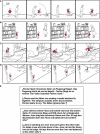The role of orbitofrontal cortex in processing empathy stories in 4- to 8-year-old children
- PMID: 21687450
- PMCID: PMC3110480
- DOI: 10.3389/fpsyg.2011.00080
The role of orbitofrontal cortex in processing empathy stories in 4- to 8-year-old children
Abstract
This study investigates the neuronal correlates of empathic processing in children aged 4-8 years, an age range discussed to be crucial for the development of empathy. Empathy, defined as the ability to understand and share another person's inner life, consists of two components: affective (emotion-sharing) and cognitive empathy (Theory of Mind). We examined the hemodynamic responses of preschool and school children (N = 48), while they processed verbal (auditory) and non-verbal (cartoons) empathy stories in a passive following paradigm, using functional Near-Infrared Spectroscopy. To control for the two types of empathy, children were presented blocks of stories eliciting either affective or cognitive empathy, or neutral scenes which relied on the understanding of physical causalities. By contrasting the activations of the younger and older children, we expected to observe developmental changes in brain activations when children process stories eliciting empathy in either stimulus modality toward a greater involvement of anterior frontal brain regions. Our results indicate that children's processing of stories eliciting affective and cognitive empathy is associated with medial and bilateral orbitofrontal cortex (OFC) activation. In contrast to what is known from studies using adult participants, no additional recruitment of posterior brain regions was observed, often associated with the processing of stories eliciting empathy. Developmental changes were found only for stories eliciting affective empathy with increased activation, in older children, in medial OFC, left inferior frontal gyrus, and the left dorsolateral prefrontal cortex. Activations for the two modalities differ only little, with non-verbal presentation of the stimuli having a greater impact on empathy processing in children, showing more similarities to adult processing than the verbal one. This might be caused by the fact that non-verbal processing develops earlier in life and is more familiar.
Keywords: OFC; affective empathy; children; cognitive empathy; fNIRS; non-verbal; verbal.
Figures






References
LinkOut - more resources
Full Text Sources
Other Literature Sources

